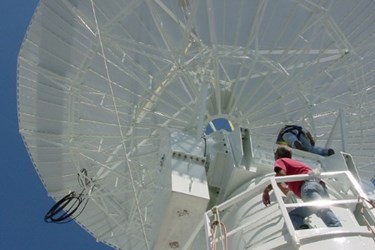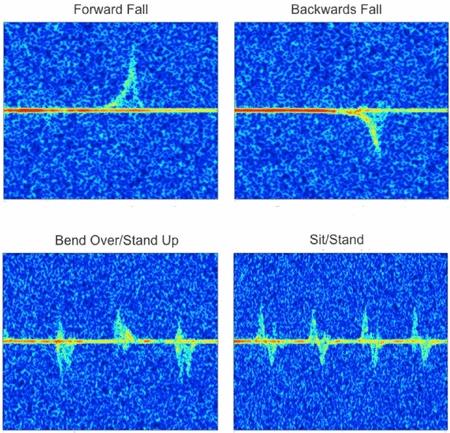Radar Getting Better With Age
By Ed Biller

If the seemingly endless supply of innovative technologies coming out of the U.S. Department of Defense’s Defense Advanced Research Projects Agency (DARPA) is any indication, old dogs can learn new tricks. Take, for example, the sea trials DARPA currently is running with its robotic ship — the Anti-Submarine Warfare Continuous Trail Unmanned Vessel (ACTUV) — and, more specifically, that ship’s radar array.
The radar system, dubbed the Towed Airborne Lift of Naval Systems project (TALONS), bobs between 500 and 1,500 feet in the air behind the ship, suspended by a parasail (as the resultant altitude reduces range limitations imposed by earth’s curvature). DARPA envisions this system — ACTUV and TALONS working together — patrolling hostile waters, while personnel-carrying ships maintain a safe distance.
With its guiding principles discovered more than 130 years ago, and its earliest incarnations taking shape in the years leading up to World War II, radar — by all logic — should be a technology we’ve outgrown by now, shouldn’t it? And yet, innovative approaches and applications continue to be found for the technology, from driverless/driver-assist automotive systems to TALONS.
Several nations independently developed radar, and in the post-war years, four distinct types emerged: monopulse radar, pulse-Doppler radar, phased-array radar, and synthetic-aperture (SAR) radar. Here’s a look at how those technologies have evolved.
Monopulse Radar
Monopulse radar was groundbreaking — and, consequently, expensive — when it was introduced in the 1940s, and it is the basis for most radars constructed since the 1960s. Just over a decade later, engineers began to apply digital signal processing (DSP) to these systems, greatly enhancing their real-time usefulness. As technology has improved and the cost has dropped, monopulse systems have become staples of modern, standard tracking radars, disposable ordnance (e.g., missiles), and commercially available surveillance systems.
Pulse-Doppler Radar
Pulse-Doppler radar is used for a multitude of applications, including as a meteorological tool and a system to target and track aircraft. Furthermore, pulse-Doppler is the foundation for SAP radar.

But, as medtech transitions to more of a value-based paradigm, and in-home care is more sought-after, pulse-Doppler also is being used to monitor patients. Less invasive than video monitoring, radar can be just as useful in fall detection or gait monitoring (i.e., diagnosing if something is “off” about the way a person is moving). The challenge with these technologies is determining what constitutes a medical emergency, and what does not, based on images like the one at right.
Synthetic Aperture Radar (SAR)
SAR currently is used for radar astronomy, remote sensing, and mapping, among other applications. SAR usually is mounted on a moving platform, like an aircraft or a space shuttle, since it works best when echo captures are taken at multiple antenna positions.
The technology is being explored as an alternative to satellite imagery for crop monitoring — since satellite image resolution can be poor and clouds often obscure the farmers’ fields — and is being applied to sensing and tracking marine debris. SAP radar’s usefulness as a weather-tracking tool continues to evolve, as well. In August, China launched into orbit a SAR satellite accurate to one meter in distance, intended as a constant, all-weather observation service that can warn of impending natural disasters, assess water resources, or even contribute to global maritime observation and security.
Phased-Array Radar
Phased-array transmissions serve the dual purpose of enhancing signal strength and minimizing interference. They have been successfully applied in radio and television broadcasting, naval radar systems, communications (both terrestrial and in space), and meteorology, to name just a few uses.
From a military standpoint, phased-array radar systems are installed most commonly in the nose of combat aircraft to track targets. Earlier this month, multiple outlets reported that Russia’s Radioelectronic Technologies Concern (KRET), part of a state-run corporation, presented an active phased antenna array radar, Zhuk-AME. The company claims that the system is designed for multipurpose MiG-35 fighter jets, and is capable of enabling “combat outside direct vision” and simultaneously tracking 30 targets, as well as simultaneously engaging six airborne targets and four ground-based targets.
The main problems with phased-array radars, despite their numerous uses, are cost and size. Because each phased array system depends on a grid of phase shifters to adjust and steer the radio beam, the grid’s complexity must be overcome during both manufacture and regular maintenance. However, one company’s antenna simplifies the whole operation by replacing the grid with a metamaterial that accomplishes the same end: precise beam-steering. The tradeoff for convenience and affordability is diminished range, power, and accuracy, but the metamaterial radar’s utility cannot be overlooked.
Currently, the metamaterial-based system is being envisioned as a cell phone-sized, all-weather sensor for civilian drones — comparable in function to the full-sized arrays found in the noses of large unmanned aerial vehicles (UAVs) — that will allow drone pilots to overcome the Federal Aviation Administration (FAA) statute prohibiting unmanned aircraft from flying beyond their line of sight. That’s not the last barrier to Amazon drone deliveries, but it’s a significant one.
Sensing What’s Ahead
As radar is improved for existing applications and repurposed for new uses, what will the future bring? Automotive radar systems will become more ubiquitous, be it for assisted or fully automated driving — so, is assisted or autonomous motorcycle guidance on the horizon? Will phased arrays become so reliable that air collisions become a thing of the past? Finally, will miniaturization enable radar functionality on our personal devices in the near future (and to what end)?
I look forward to your thoughts in the Comments section below.
